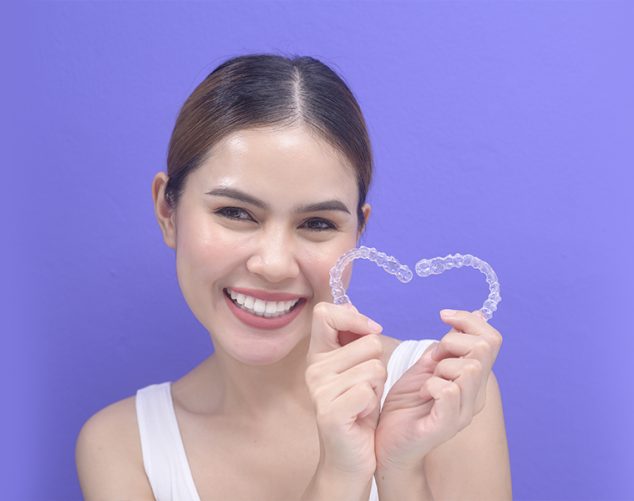
Correcting Your Overbite with Invisalign: What You Need to Know
If you’ve been told you have an overbite, you’re not alone. It’s one of the most common bite issues people face—but it doesn’t have to be a lifelong concern. Many patients are now choosing Invisalign in Brampton as a discreet and effective way to correct their overbite without the wires and brackets of traditional braces.
So, what exactly is an overbite? How does Invisalign help? And what should you expect throughout the process? Let’s break it all down so you can feel confident and informed.
First, What Is an Overbite?
An overbite takes place when your upper front teeth sit very far forward over your lower teeth. A slight overbite is normal, but when it’s more pronounced, it can cause problems.
Common issues caused by a deep overbite:
- Worn or damaged teeth
- Jaw pain or tension
- Speech difficulties
- Difficulty biting or chewing
- Strain on jaw muscles
Left untreated, it may also impact your appearance and self-esteem. The good news? Invisalign offers a solution that’s both comfortable and effective.
How Invisalign Works
Invisalign utilizes a series of clear, highly custom-made aligners that slowly and gradually shift your teeth into better alignment. They’re made from a smooth, BPA-free plastic that’s comfortable and nearly invisible when worn.
Here’s what makes Invisalign a great option:
- No metal wires or brackets
- Removable for eating, brushing, and flossing
- Customized to fit your smile and treatment plan
- Designed to rectify a range of orthodontic issues, including overbites
Why Choose Invisalign for Overbite Correction?
Invisalign aligners don’t just straighten teeth—they can also fix bite issues. With the help of attachments (tiny, tooth-colored buttons) and elastics, they apply pressure to guide both upper and lower teeth into a better bite position.
Top 4 Benefits of Invisalign for Overbites:
- Discreet Treatment – The clear trays are barely noticeable, perfect for adults and teens alike.
- Less Disruption – Remove them during meals or for special occasions.
- Fewer Appointments – You’ll likely need fewer check-ins than with braces.
- Comfortable Fit – No sharp edges or poking wires.
What the Invisalign Process Looks Like
Your Invisalign journey begins with a proper consultation and ends with a more confident, healthier smile. Here’s a step-by-step view of what you can expect:
Step 1: Consultation
A visit to a dentist near you will determine if Invisalign is right for your bite. They’ll evaluate your teeth, take 3D scans, and discuss your goals.
Step 2: Customized Treatment Plan
Using digital imaging, your dentist will map out the movement of your teeth over time. You’ll even get a preview of your future smile.
Step 3: Wearing Your Aligners
Once your aligners arrive, you’ll wear them 20–22 hours a day, hence switching to a new set every 1–2 weeks. Each set brings your teeth a little closer to the desired position.
Step 4: Progress Checks
You’ll check in with your provider every 6–8 weeks to ensure your teeth are shifting correctly and make any needed adjustments.
Step 5: Retainers
After your final tray, you’ll wear a retainer at night to keep your teeth from shifting back.
How Long Does It Take?
Treatment time differs based on the severity of your overbite. Some cases may take as little as 6 months, while others may take 18–24 months. Your dentist will give you a realistic timeline during your consultation.
Is Invisalign Right for You?
Invisalign can correct most mild to moderate overbites. That said, not every case is the same. Severe overbites or jaw alignment issues might require a combination of treatments or traditional orthodontics.
You’re likely a good candidate if:
- You have healthy gums and teeth
- You’re committed to wearing aligners daily
- You want a subtle, flexible option
- You’re motivated to follow your treatment plan
If that sounds like you, it might be time to explore Invisalign near you and take the first step.
Tips to Get the Most Out of Your Treatment
Invisalign is convenient, but it still requires commitment. These small habits can make a big difference in your results:
✅ Wear aligners at least 22 hours daily
✅ Clean them regularly to avoid staining
✅ Use your chewies (those small rubber cylinders) to seat aligners properly
✅ Don’t skip appointments—even if your teeth look straight
✅ Stick to the aligner schedule to keep things moving
Real Talk: What Patients Say
Many Invisalign users say they barely noticed the trays after the first few days. Some even say their overbite corrected faster than expected.
A patient shared: “I didn’t even realize how bad my bite was until I saw the ‘before’ and ‘after’ scans. Invisalign changed more than my smile—it fixed how I chew, too.”
Stories like that are common. And they’re a reminder that fixing an overbite isn’t just cosmetic—it’s functional.
Final Thoughts
Correcting your overbite doesn’t mean you have to deal with metal braces and frequent dental visits. With Invisalign, you get a nearly invisible, flexible, and effective way to improve your bite and your confidence.
If you’ve been thinking about making a change, now is a great time to explore your options. Book a consultation with Royal West Dentistry and discover how Invisalign could transform your smile—one clear tray at a time.
You don’t have to live with discomfort or feel self-conscious about your bite. With the right plan and a little patience, your new smile is closer than you think.